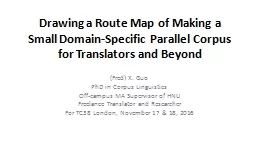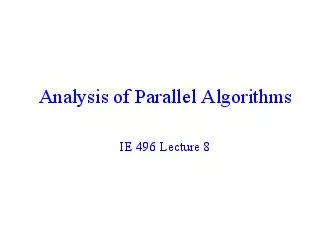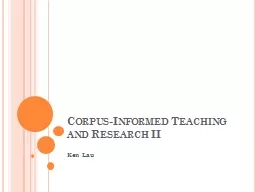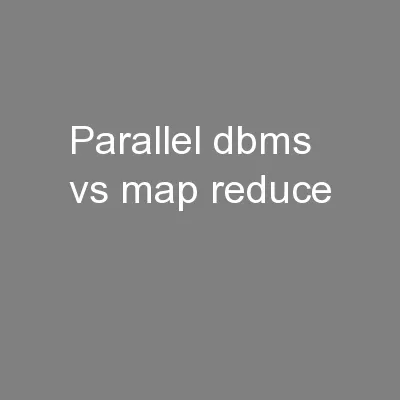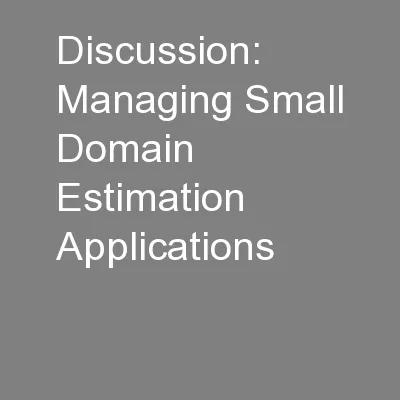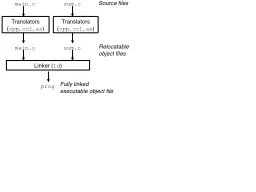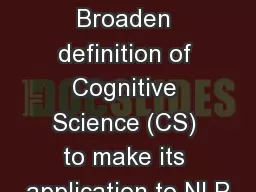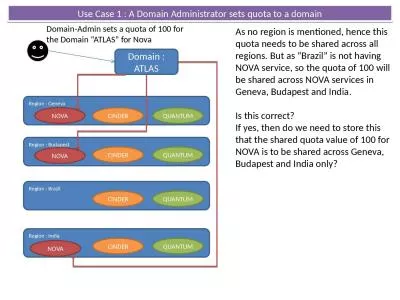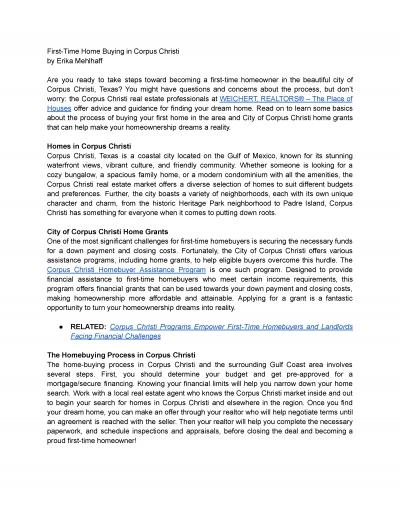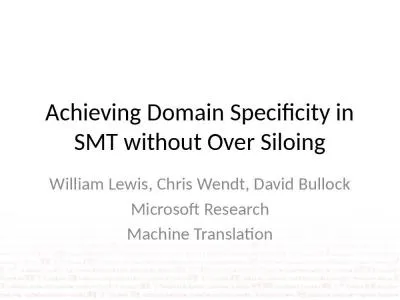PPT-Drawing a Route Map of Making a Small Domain-Specific Parallel Corpus for Translators
Author : pattyhope | Published Date : 2020-08-26
Fred X Guo PhD in Corpus Linguistics Offcampus MA Supervisor of HNU Freelance Translator and Researcher For TC38 London November 17 amp 18 2016 Selfintroduction
Presentation Embed Code
Download Presentation
Download Presentation The PPT/PDF document "Drawing a Route Map of Making a Small Do..." is the property of its rightful owner. Permission is granted to download and print the materials on this website for personal, non-commercial use only, and to display it on your personal computer provided you do not modify the materials and that you retain all copyright notices contained in the materials. By downloading content from our website, you accept the terms of this agreement.
Drawing a Route Map of Making a Small Domain-Specific Parallel Corpus for Translators: Transcript
Download Rules Of Document
"Drawing a Route Map of Making a Small Domain-Specific Parallel Corpus for Translators"The content belongs to its owner. You may download and print it for personal use, without modification, and keep all copyright notices. By downloading, you agree to these terms.
Related Documents

